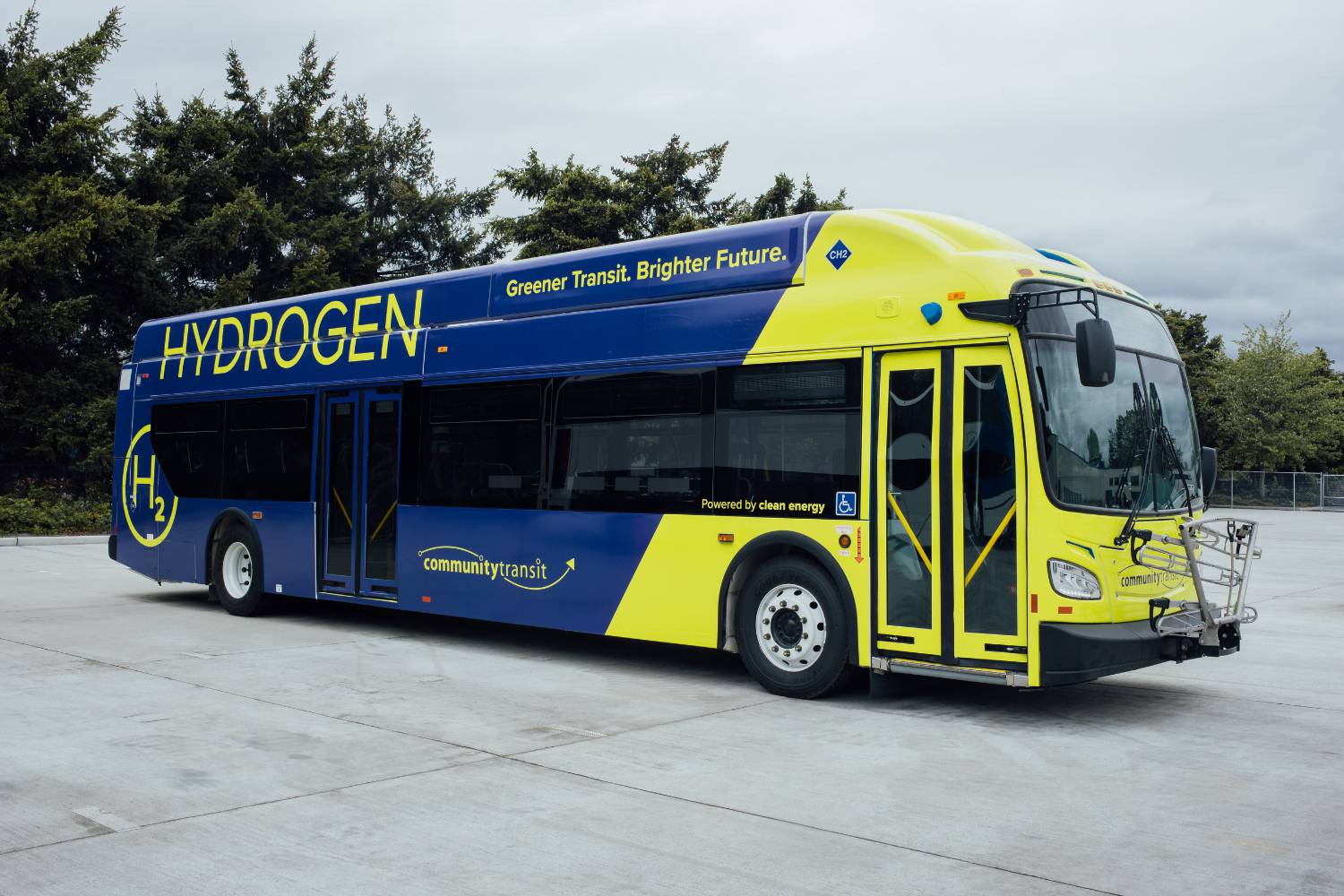
Community Transit takes delivery of region’s first hydrogen-powered electric bus
The agency will road test technology options for zero emissions fleet transition
 Pictured: Community Transit’s hydrogen-powered bus, the first of its kind in the Puget Sound region.
Pictured: Community Transit’s hydrogen-powered bus, the first of its kind in the Puget Sound region.
Snohomish County, Wash. — People in Snohomish County will have a chance to ride a new and different kind of bus later this year – one that’s powered by hydrogen instead of diesel fuel. Community Transit is the first transit agency in the Puget Sound region to conduct a pilot test of a fuel cell electric bus (FCEB) in service later this year as part of its commitment to environmental sustainability.
“Riding the bus is already one of the most effective things you can do to reduce your carbon footprint, and moving away from diesel-powered buses reduces that impact even more,” said Community Transit CEO Ric Ilgenfritz. “Our journey towards a zero emissions fleet continues as we prepare to learn real-life lessons by putting a fuel cell electric bus in service along with a battery electric bus.”
In addition to the FCEB manufactured by New Flyer, Community Transit also recently took delivery of its first Battery Electric Bus (BEB) made by Gillig.
Because of Snohomish County’s varied routes and terrain, and its large service area, the agency will test and evaluate the performance of both types of electric buses in service. Close monitoring will validate the performance assumptions in the agency’s transition plan, which envisions use of FCEB technology on heavy duty routes like Swift bus rapid transit (BRT) lines where greater battery range would be necessary.
FCEBs have fuel cells that convert hydrogen into electricity through a catalytic process that separates hydrogen molecules into protons & electrons. The onboard batteries that power the vehicle get charged and the sole byproduct is water. Besides having greater range in terms of coverage area, FCEBs are less impacted by cold weather. With FCEBs, the conversion of hydrogen to electricity produces heat, which can be used to heat the passenger cabin.
“This is the beginning of a two-decade plan to achieve a full conversion to a zero emissions fleet by 2044,” said Ilgenfritz. “In addition to seeing how the buses perform in operation, we’ll continue to explore charging and fueling options as well as train and build our workforce.”
Long-term operations of hydrogen-fueled vehicles in our region require establishing a sustainable, and preferably nearby, hydrogen source-- a topic of growing interest across multiple industries. Community Transit is investigating options, including potential public and private partnerships, for establishing a permanent fuel source, while initially trucking in hydrogen to support near-term operations.
The new zero emissions buses are currently undergoing preparations for their service debut. The buses are being outfitted with onboard technology and other standard equipment, such as a fare box so they can run just like the existing Community Transit fleet. Customers will notice a quieter ride and a new bold, signature design on the outside of these buses, but the rest of their experience will feel totally familiar.
Regular service on the BEB is expected to start this summer while service on the FCEB will start in the fall.
Community Transit expects to transition 30% of its 260-bus fleet by 2030. The agency’s Long Range Plan, Journey 2050, establishes a target of achieving a full transition to zero-emissions buses by 2044. For more information, including the Zero Emission Bus Transition Plan, visit communitytransit.org/zeroemissions.
Community Transit provides bus and paratransit service, vanpool, and innovative transit options in Snohomish County. The agency is expanding the Swift bus rapid transit network to connect people to light rail and provide fast, frequent service throughout the county.
